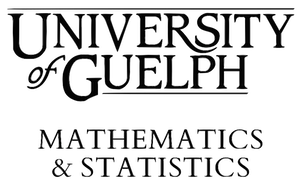Summerlee Science Complex Room 1511
SPEAKER: KHURRAM NADEEM
ABSTRACT:
Stochastic versions of Gompertz, Ricker and various other dynamics models play a fundamental role in quantifying strength of density dependence and studying long term dynamics of wildlife populations. These models are frequently estimated using time series of abundance estimates that are inevitably subject to observation error and missing data. This issue can be addressed with a state-space modeling framework that jointly estimates the observed data model and the underlying stochastic population dynamics (SPD) model. In cases where abundance data are from multiple locations with a smaller spatial resolution (e.g. from mark-recapture and distance sampling studies), models are conventionally fitted to spatially pooled estimates of yearly abundances. Here, we demonstrate that a spatial version of SPD models can be directly estimated from short time series of spatially referenced distance sampling data in a unified hierarchical state-space modeling framework that also allows for spatial variance (covariance) in population growth. We also show that a full range of likelihood based inference, including estimability diagnostics and model selection, is feasible in this class of models using a data cloning algorithm. We further show through simulation experiments that the hierarchical state-space framework introduced herein efficiently captures the underlying dynamical parameters and spatial abundance distribution. We apply our methodology by analysing a time series of line-transect distance sampling data for fin whales (Balaenoptera physalus) off the U.S. west coast. Although there were only seven surveys conducted during the study time frame, 1991-2014, our analysis detected presence of strong density regulation and provided reliable estimates of fin whale densities. In summary, we show that the integrative framework developed herein allows ecologists to better infer key population characteristics such as presence of density regulation and spatial variability in a population’s intrinsic growth potential.
